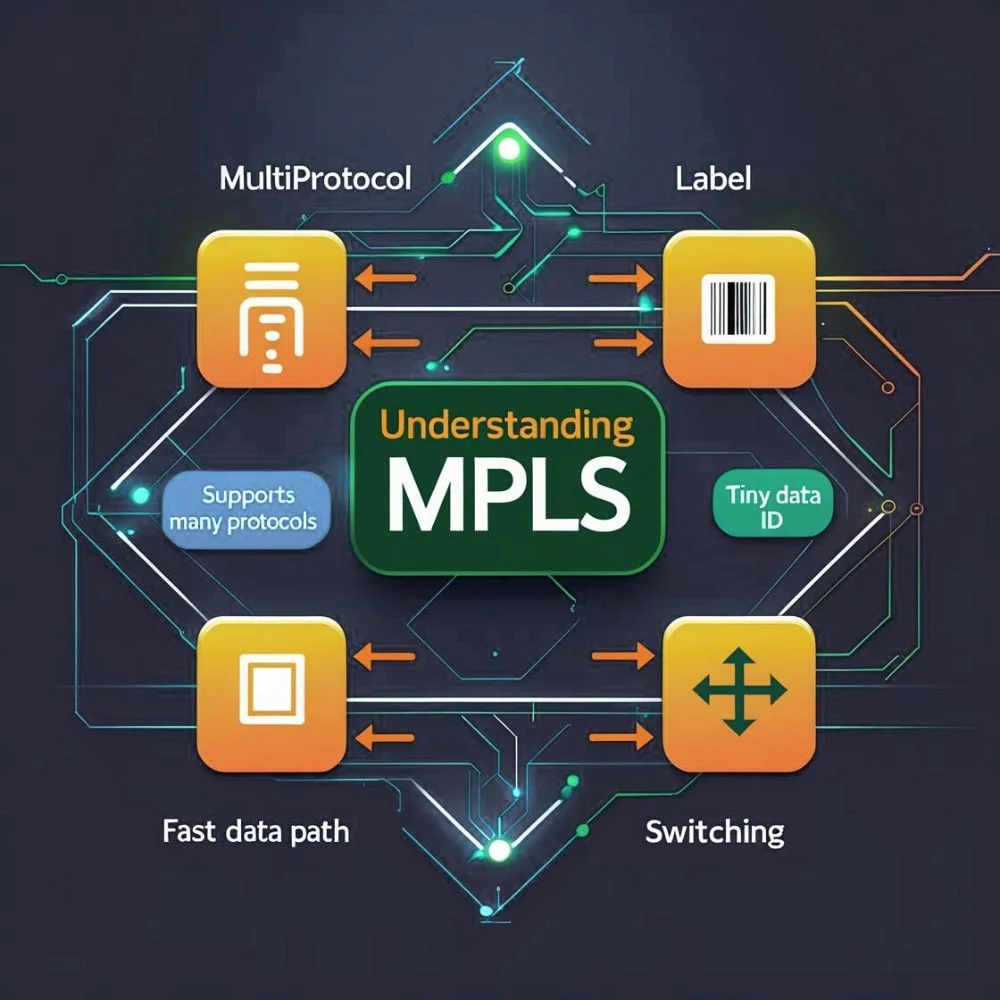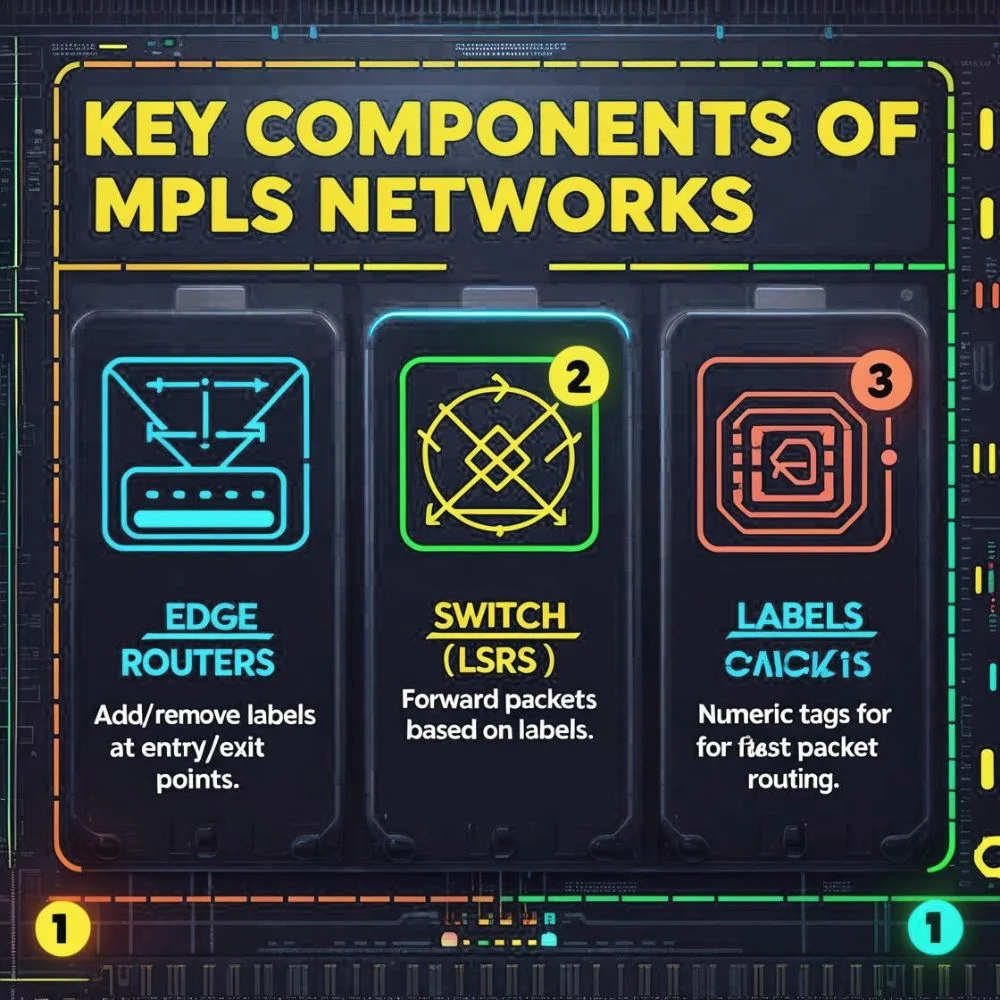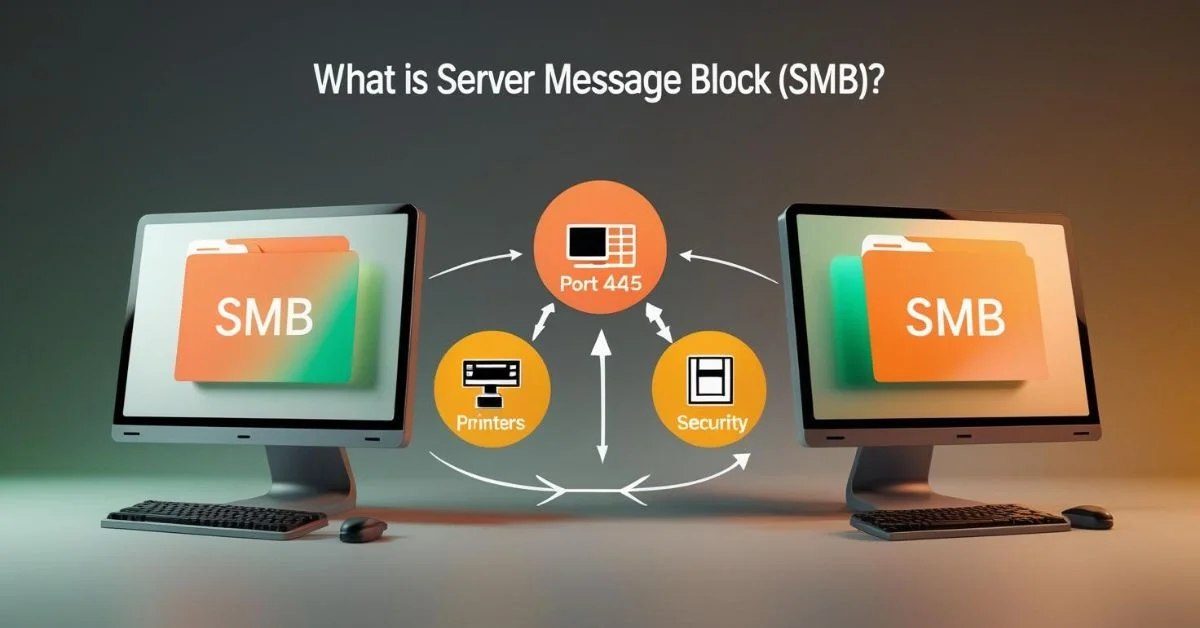MPLS (Multiprotocol Label Switching) is a networking technique that speeds up and streamlines data flow across networks, especially in enterprise and service provider environments. It tags data packets with labels and directs them through predefined paths instead of traditional IP-based routing. This approach ensures faster transmission, improved traffic management, and greater reliability supporting activities like web browsing, video calls, and email efficiently.
Understanding the MPLS Abbreviation
Let’s break down the term Multiprotocol Label Switching:

- Multiprotocol means MPLS can work with various network protocols like IP, Ethernet or ATM.
- Label refers to a short identifier added to data packets.
- Switching is the process of forwarding packets based on these labels rather than full IP lookups.
This technique is particularly useful in large scale environments like data centers, internet service providers (ISPs) and corporate networks.
How MPLS Works?
Instead of analyzing a packet’s IP address at every stop, MPLS routers use the label to guide the packet along a predefined path. Here’s how it typically works:
- Label Assignment: When a packet enters an MPLS enabled network, the entry router (called a Label Edge Router or LER) assigns it a label based on its destination and service type.
- Label Forwarding: Inside the MPLS core, Label Switch Routers (LSRs) read the label and directly forward the packet to the next router, skipping full IP address checks.
- Label Removal: The exit router removes the label and delivers the packet to its final destination.
Think of it like a package delivery service. Instead of writing the full address at each stop the package is given a barcode that automated systems read quickly to send it in the right direction. That’s essentially how MPLS helps move data more efficiently.
Key Components of MPLS Networks

- Label Edge Routers (LERs): These routers sit at the edge of the network and are responsible for adding and removing MPLS labels.
- Label Switch Routers (LSRs): These routers exist within the core of the MPLS network and switch data packets based on their labels.
- Labels: Simple numeric identifiers used instead of long IP addresses to route data quickly.
Benefits of MPLS in Modern Networking
MPLS remains widely used for several reasons, especially in enterprise and telecom environments. Some major benefits include:
- Improved Speed: MPLS reduces the time routers need to inspect packet headers.
- Reliable Delivery: The network can reroute traffic quickly in case of failure.
- Traffic Engineering: Administrators gain precise control over data flow.
- QoS Support: Critical applications like voice or video receive priority.
- VPN Capability: MPLS supports secure, scalable Virtual Private Networks.
Where Is MPLS Used Today?
You’ll find MPLS technology in:
- Large Enterprises: To connect multiple offices and data centers reliably.
- Telecommunication Providers: To manage massive volumes of internet traffic.
- Finance and Healthcare Sectors: Where secure, consistent data delivery is critical.
- Cloud Networking: For dedicated links between cloud providers and client infrastructures.
MPLS vs Traditional IP Routing
MPLS uses labels to forward data, making it faster than traditional IP routing, which checks full IP addresses at every step. MPLS is also more reliable because it can quickly reroute traffic if a link fails. It supports traffic engineering, allowing better control over data paths and offers strong Quality of Service (QoS), so critical traffic like video or voice is prioritized. In contrast, traditional IP routing is slower, less flexible and doesn’t handle real-time data as efficiently.
Is MPLS Outdated? The Rise of SD-WAN
With the rise of Software-Defined WAN (SD-WAN), some people wonder if MPLS is becoming obsolete. SD-WAN offers flexibility, cost-efficiency and cloud integration. However, MPLS still has a role to play in environments where guaranteed performance, low latency and predictable routing are required.
Real-World Example
Imagine a bank with branches in five different cities. It needs fast and secure connections between these locations for handling customer data and financial transactions. Using MPLS, the bank can create a private, high-performance network with controlled traffic flows and strong security. Even during peak hours or technical issues, the MPLS system reroutes the data quickly to prevent downtime.
Conclusion
The MPLS abbreviation might sound technical, but the idea behind it is simple and powerful. By using labels instead of IP addresses, MPLS improves the speed, reliability and flexibility of data transmission. It plays a vital role in modern networking, especially in industries where stable and high-speed connections are essential.
Even with new networking tools like SD-WAN, MPLS still plays a key role. If you’re running a business or managing IT, learning what MPLS means and how it works helps you understand how your data travels reliably across the internet.



